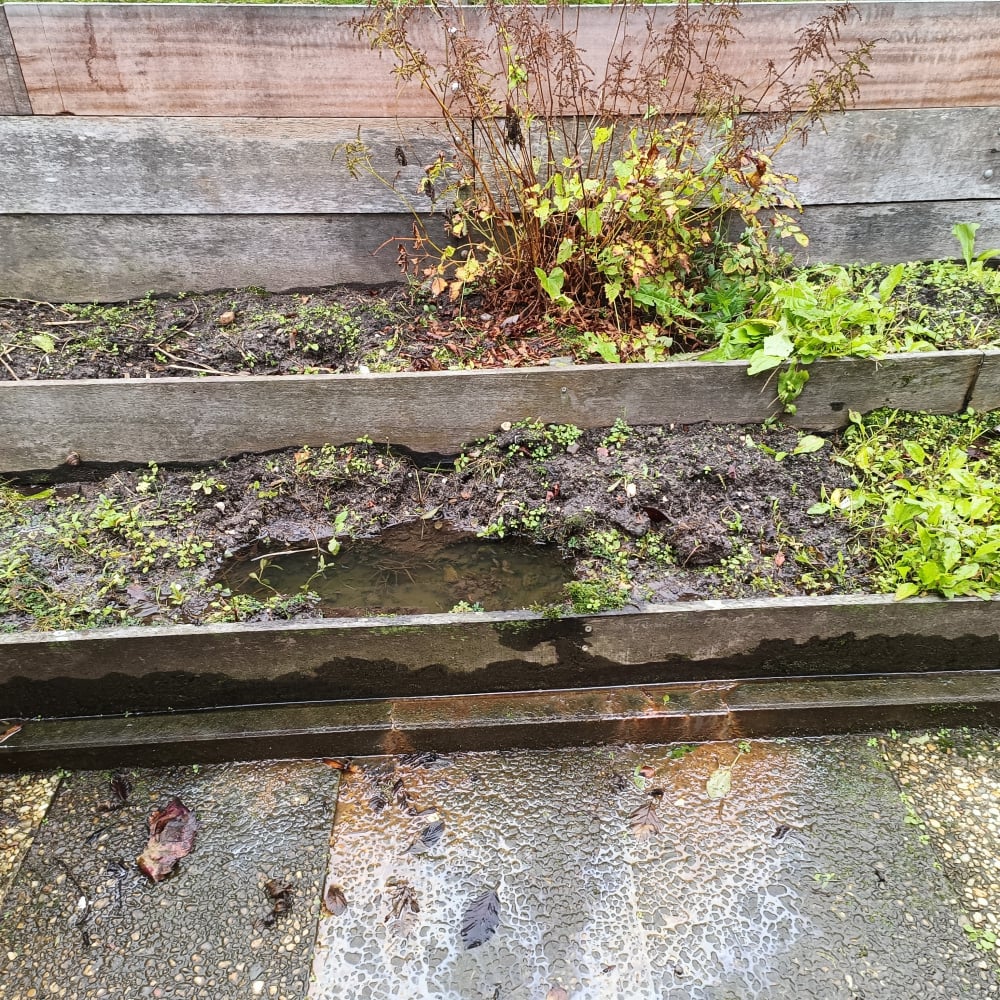This Forum will close on Wednesday 27 March, 2024. Please refer to the announcement on the Discussions page for further detail.
Gardening on a slope...Ground water issues.
Hi good morning all. I live on a dijk; sand at the top, clay at the bottom of the garden. I want to remodel this area of my garden that is not the lowest part of the garden but is very much affected by ground water. From top to bottom the drop to this point is 2metre 10cm. Behind me I have a drainage put, which is currently not attracting any of the ground water that comes up over the boarder and over the tiles. As in the photo. The benefit of this area is that I use the ground water in sumer to water the garden, however I do need to lay new tiles and need to manage the water and future proof this area against rising ground water that is currently about 30cm above the level of the tiles. I cannot raise the tile level. Any ideas you wonderful lot?
Regards Les
Regards Les

0
Posts
Do you live in Holland on a dyke where the water is higher than your garden and therefore it is seeping through at the bottom? Is it worse now than in previous years?
How do you access the groundwater to water your garden in the summer?
Sorry for all the questions! More photos of your garden would help us to better understand your problem.
https://www.angloinfo.com/blogs/netherlands/south-holland/hollywood-2-holland/how-dikes-work-to-keep-holland-from-flooding/
😢
Gardening in Central Norfolk on improved gritty moraine over chalk ... free-draining.
Thank you Loxly, is this procedure a "french drain?" I think a combination of solutions from both of your posts should indeed go some way to solving the problem. I am not supposed to utilise drainage systems for ground water removal but I have no option I feel. Thank you, now I have my winter project.